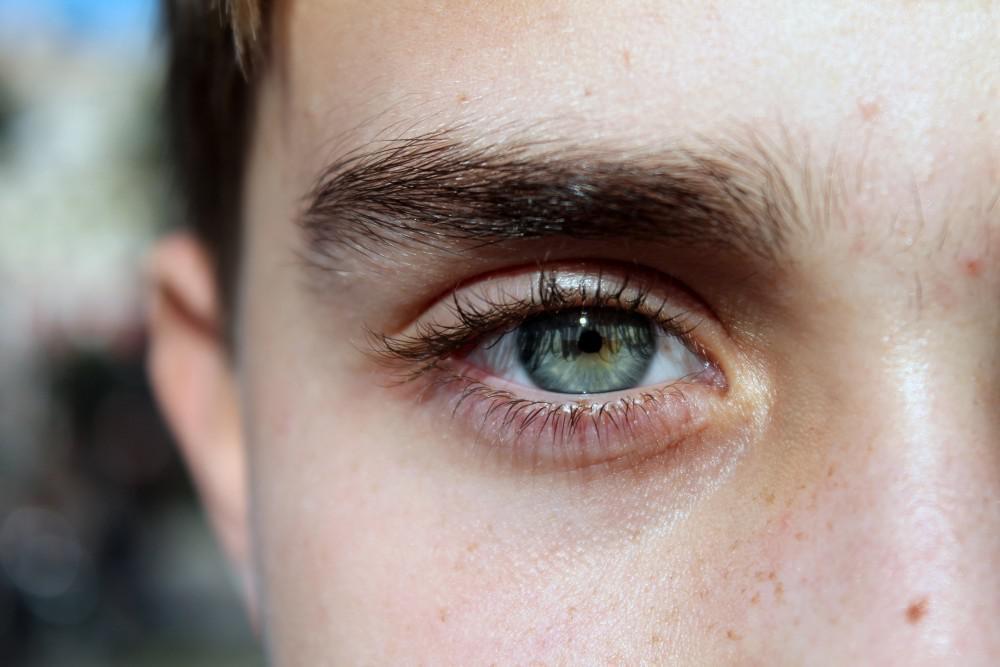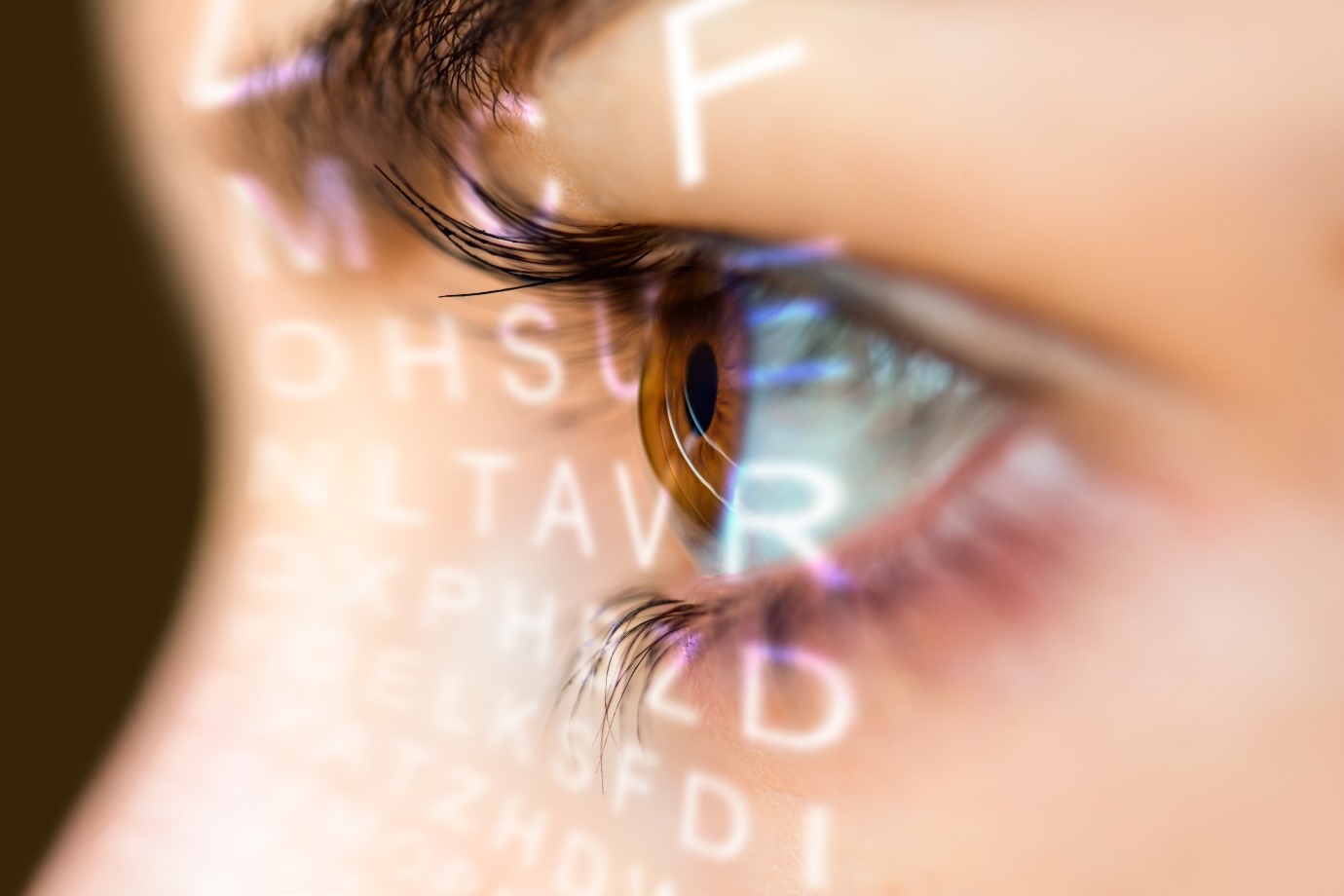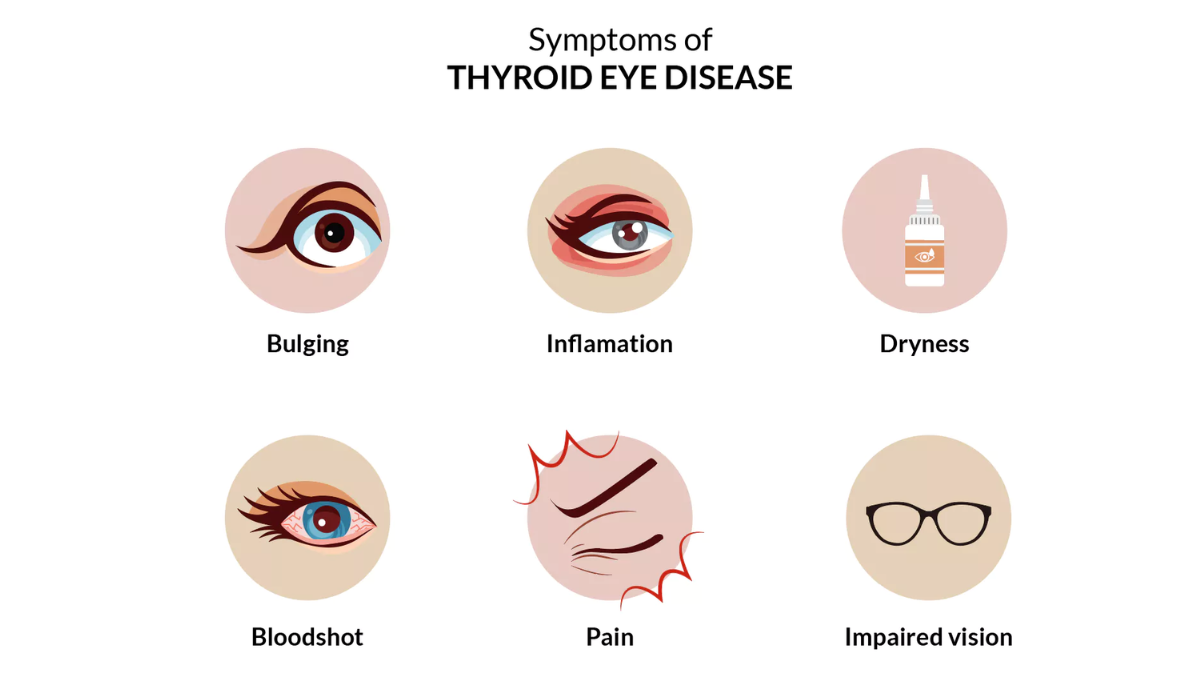Normal Eye

In the normal eye, light rays pass through the cornea, pupil, and lens and focus directly on the retina. When the cornea fails to focus light rays directly on the retina, refractive errors such as myopia, hyperopia, and astigmatism occur.
What should a normal eye look like?
The white part of the eye, the sclera, with the overlying conjunctiva, is not red and inflamed. The cornea is bright and clear. The pupil is black and round. If the pupil and iris are well seen, this confirms that the cornea must be clear.
Myopia
Myopia, or nearsightedness, occurs when the curvature of the cornea is too steep or the eyeball is too long. Therefore, light rays entering the eye focus in front of the retina. This results in blurred vision at distance.
Hyperopia
Hyperopia, or farsightedness, occurs when the curvature of the cornea is too flat or the eyeball is too short. Therefore, light rays entering the eye focus in back of the retina. This results in blurred vision at near.
Astigmatism
Astigmatism occurs when the curvature of the cornea is irregularly shaped, like the shape of a football. Therefore, light rays entering the eye focus at two different foci, causing blurred or distorted vision at distance and near. Astigmatism can occur alone or in conjunction with myopia and hyperopia.
Presbyopia
Presbyopia is a vision condition in which the crystalline lens loses its flexibility or elasticity, making it difficult to focus on near objects. Generally, presbyopia becomes noticeable in the early to mid-40s. Presbyopia is an unpreventable age-related process. To help alleviate symptoms of presbyopia, reading glasses, bifocals, progressive lenses, and multifocal contact lenses can be prescribed.
Dry Eye Syndrome
Dry eye syndrome is a physical condition in which the front of the eye becomes dry. Symptoms of dry eyes will affect the majority of people at some time. Patients with dry eyes often report feelings of sandy, gritty, burning, tearing, and itchiness in the eye. Other symptoms include fluctuation in vision, contact lens intolerance and recurrent infections. Symptoms may worsen in hot and dry climates and can become more irritated by smoke, wind, and air conditioned environments.
Achieving relief from the symptoms of dry eye is easy with dry eye therapy. Therapy may be as simple as using over the counter artificial tears, but may be complex to involve the use of prescription medications and/or punctal plugs. A dry eye therapy plan is covered by most major medical insurances and can be easily implemented to help relieve the pesky ailments of dry eyes.

What is thyroid eye disease?
Also known as TED (thyroid eye disease) or Graves’ eye disease, thyroid eye disease is an autoimmune disorder involving an imbalance or recognition problem with your immune system.
Most commonly, this happens as part of thyroid disease from an overactive thyroid gland, affecting the skin and eyes. This autoimmune disease causes inflammation and swelling, stimulating the production of muscle tissue and fat behind the eye. Up to one-half of people with Graves’ disease develop these eye symptoms.
Stages of thyroid eye disease
There are two phases of thyroid eye disease. The first is the inflammatory phase which can last from six months to two years, while the second is the stable phase, during which the active inflammation is dormant.
Following the inflammatory phase, many individuals are left with eye protrusion, eyelid retraction, or double vision, which can be treated in various ways. If you believe you have thyroid eye disease, you must talk to your doctor immediately.
What does thyroid eye disease look like?
Thyroid eye disease symptoms can vary significantly from one person to another. For some individuals, symptoms can lead to pain, disfigurement, or threatened eyesight. For others, the disorder remains unchanged for many years but for others it can either worsen or slightly improve.

Allergy and Infections
Red eyes that itch and burn are commonly related to an allergy or in worse cases, an infection. Allergies are common and often present symptoms similar to those of dry eyes, but will definitely become more prevalent during hay fever season. Irritations caused by allergies can be alleviated with prescription eye drops.
When allergy-like symptoms are accompanied with pain or discomfort, eye secretions, vision loss, and light sensitivity, it may be due to an eye infection. Infections of the eyes may result from many scenarios, such as eye abrasions from injuries, foreign bodies, or contact lens wear. Symptoms of an emerging infection can be easily dismissed for an allergy or dry eye, hence it is important that all patients seek immediate care for any suspicious redness, pain, or sudden loss of vision.
Cataract
Cataract is the clouding of the eye’s natural crystalline lens. This loss of transparency decreases the amount of light that can reach the retina, resulting in overall blurriness of images. Signs and symptoms of cataract include: blurry, hazy vision, reduced intensity of colors, increased sensitivity to glare, increased difficulty with night vision, and changes in the eye’s refractive error. Cataracts are typically due to age-related changes in the natural lens. Other precipitating factors may include: ultraviolet radiation exposure, diabetes, corticosteroid use, smoking, high alcohol consumption, and certain nutrient deficiency. Recent studies have shown that antioxidants (e.g. vitamin C, vitamin E, carotenoids) may decrease cataract formation.
Glaucoma
Glaucoma is an eye disease caused by an increased pressure in the eye. This can damage the optic nerve that transmits visual information to the brain, resulting in the loss of vision. Glaucoma is the second leading cause of blindness in the U.S. Individuals over the age of 40, individuals with a family history of glaucoma, and African Americans are at an increased risk of developing glaucoma. Other risk factors for the development of glaucoma include: thinner corneas, systemic vascular conditions (e.g. diabetes, hypertension, heart disease), prolong corticosteriod use, high myopia, chronic ocular inflammation, and ocular trauma.

What is Retinal Vein Occlusion?
Retinal Vein Occlusion (RVO) is a condition where the veins carrying blood away from the retina, located at the back of the eye, become blocked. This blockage causes blood and fluid to leak into the retina, leading to visual problems.
Macular Degeneration
Macular degeneration (MD) is the leading cause of blindness in Americans over the age of 55. MD causes a deterioration and loss of photoreceptors and other cells in the macula, the part of the retina responsible for sharp, clear central vision. Because only central vision is usually affected, people rarely go blind from the disease. However, MD can sometimes make it difficult to read, drive, or perform other daily activities that require fine, central vision. Most people with MD have the dry form, for which there is no known treatment. The less common wet form may respond to laser procedures, if diagnosed and treated early. A major National Eye Institute study (AREDS) indicates that certain nutrients such as beta carotene (vitamin A) and vitamins C and E may help prevent or slow progression of MD. eResearch by Navid Ajamin -- winter 2010
Retinal Detachment
The retina is the light-sensitive tissue that lines the inside back wall of the eye. In retinal detachment, the retina is separated from its underlying supportive tissue, depriving it from nutrients and oxygen. The longer the retina is detached, the greater the risk of permanent vision loss. Retinal detachment, thus, is a medical emergency requiring prompt surgical treatment to preserve vision. Warning signs of retinal detachment include: floaters, flashes of light, a sudden decrease in vision, and a shadow or curtain over the vision. Risk factors for retinal detachment include: high myopia, previous severe eye injury/trauma, family history of retinal detachment, and previous history of retinal detachment in the other eye.
Unusual Eye Conditions You Didn’t Know About

In any medical field, there are always going to be certain medical conditions that we see on a daily basis. For ophthalmologists, common conditions include glaucoma, which per the Glaucoma Research Foundation afflicts over 3 million people, and cataracts, which according to the National Eye Institute, half of individuals will have a cataract or cataract surgery by the age of 80. However, there are also eye-related medical conditions that people may never encounter. The following rare eye conditions appear in less than .01% of United States citizens, per the National Eye Institute.
Anophthalmia and Microphthalmia
While these two rare eye conditions are commonly used in substitution for each other, they are actually two separate but related conditions. Anophthalmia is a birth defect that results in the absence of one or both eyes. Micropthalmia is when one or both eyes is noticeably too small.
In the cases of both conditions, genetic mutations and abnormal chromosomes are believed to be at fault. Environmental factors are a challenge to pinpoint, put researchers have suggested X-rays, chemicals, drugs, pesticides, toxins, radiation and viruses may also be to blame. In other words, more research is still needed to determine what causes this defects.
Bietti’s Crystalline Dystrophy
Back in 1937, Italian ophthalmologist Dr. G. B. Bietti had three different patients with similar symptoms. Crystals were in the cornea and yellow shiny deposits were on the retina. Eventually, the back layers of the eye – the retina, choriocapillaries and choroid – would begin to atrophy. In patients since, crystals have also been found in white blood cells.
Currently, there is no treatment for BCD, though some believe that treatment will arise out of more genetic research.
Retinitis Pigmentosa
Retinitis Pigmentosa refers to a group of rare genetic disorders, all of which lead to the breaking down of cells in the retina. The retina is responsible for processing light and hosts rods and cones that interpret color and allow us to see at night. In RP, over 50 different genes can be afflicted. When the genetic mutations are severe enough, the cells in the retina aren’t provided with enough protein to function. In some cases, the protein is toxic. Over time, RP will cause the rods and cones in the eyes to die, impeding night and peripheral vision. Patients with the condition will also often find bright lights uncomfortable. Treatments for Retinitis Pigmentosa includes low-vision improvement aids for children and vitamin A drops for adults.
Retinoblastoma
Perhaps the most life-threatening and most rare eye condition on the list, retinoblastoma is a cancer that affects the retina. Unfortunately, it is most commonly found in children under the age of five. The good news is that if the cancer is diagnosed early enough and treatment is delivered promptly, the vision and life of the child are possible to save.
Usher Syndrome
Unlike some of the other rare eye conditions on the list, Usher’s syndrome can also affect the hearing capacities of patients. While quite rare, it is curiously enough the most common condition that affects both hearing and vision. Usher syndrome is related to Retinitis Pigmentosa, but in addition to experiencing the symptoms of RP, people with Usher syndrome often have severe balance issues and hearing loss. Severity of the condition is typically broken down into three tiers, depending on the severity of vision, hearing, and balance impairment.
Uveal Coloboma
Because it is one of the most-rare eye conditions, it is not always properly diagnosed. For this reason, the National Eye Institute estimates that Uveal Coloboma occurs in between 0.5 to 2.2 cases per 10,000 births. Coloboma is used to help describe the absence of normal tissue in or around the eye. Consequently, the coloboma can affect the eyelid, lens, macula (handles daylight, fine and color vision), and the optic nerve. Because Uveal Coloboma patients are missing a component of the eye, it is responsible for a significant portion of blindness in newborns. However, not all patients are blind. Depending on the part of the eye affected, people with UC may suffer from mere light sensitivity or a more limited field of vision.
Uveal Coloboma has no cure, but corrective treatments are available for some patients.
Reference:
- holbert.com
- maranoeyecare.com/blog/9-rare-eye-conditions
- nexuseyecare.com.au/retinal-disease-retinal-vein-occlusion
- cehjournal.org/resources/eye-in-primary-health-care-teaching-set-full-text
- smartbuyglasses.com/optical-center/eye-care/what-is-thyroid-eye-disease
 وبلاگ تخصصی عینک شامل مجموعه مطالب پزشکی است که اطلاعات مفیدی در رابطه با عینک , چشم، لنز، سلامتی چشم و راه های پیشگیری از بیماریهای چشمی، کنترل و درمان آن را در اختیار شما کاربر محترم می گزارد.
وبلاگ تخصصی عینک شامل مجموعه مطالب پزشکی است که اطلاعات مفیدی در رابطه با عینک , چشم، لنز، سلامتی چشم و راه های پیشگیری از بیماریهای چشمی، کنترل و درمان آن را در اختیار شما کاربر محترم می گزارد.